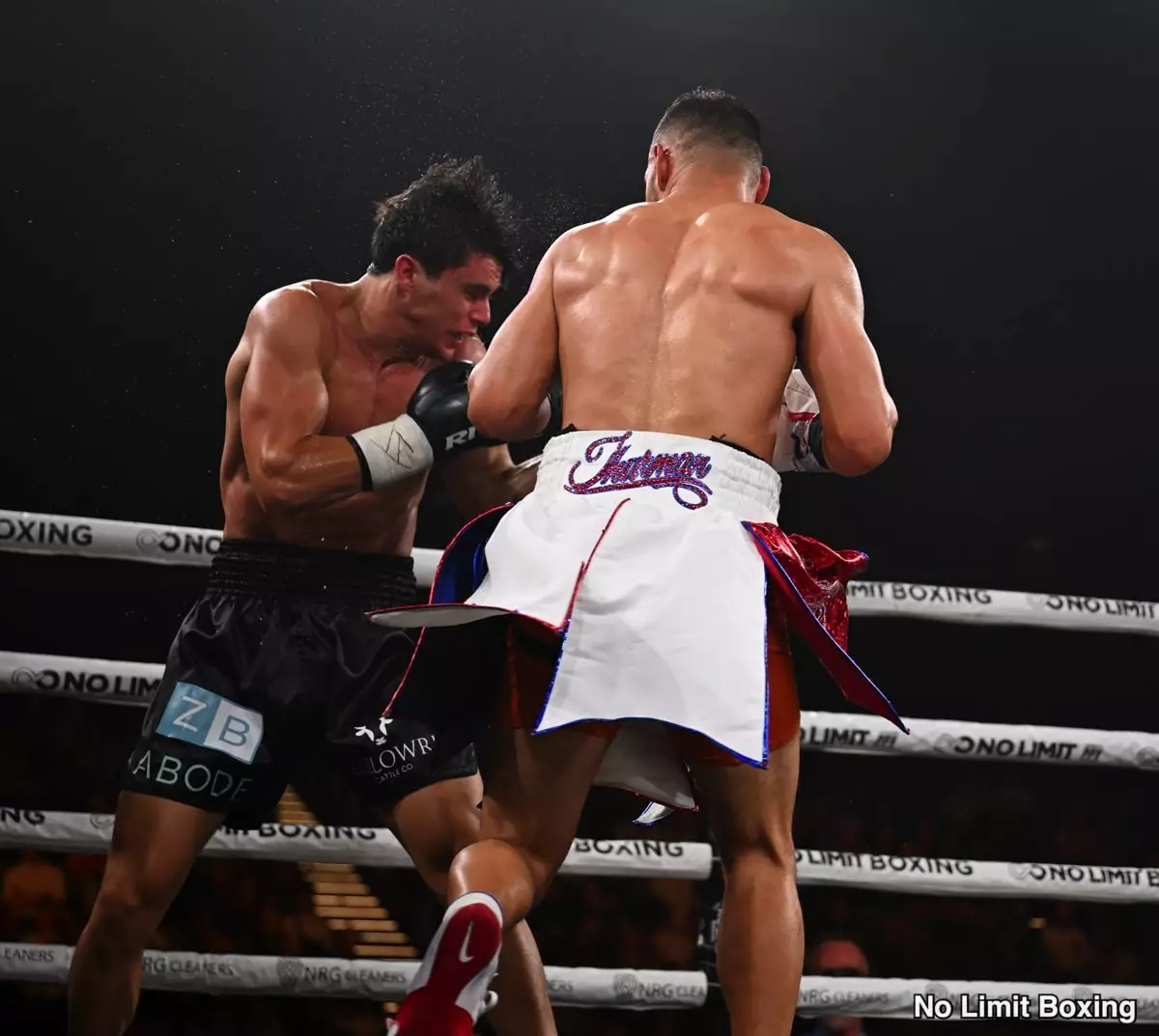Keith Thurman, a name once synonymous with the welterweight elite, attempted to signal his return to boxing prominence with a third-round TKO over Brock Jarvis at the Hordern Pavilion in Sydney. Despite the victory, Thurman’s performance invited skepticism rather than celebration. At 36 years old, after three years of inactivity, the bout revealed both glimmers of his former self and haunting shadows of what could be seen as a fading star.
The initial rounds presented a cautious strategy from Thurman, who seemed more focused on evasion than engagement. In a sport that demands aggression, the low action during the first two rounds raised questions. Was this a tactical choice born from experience, or a manifestation of the ring rust that had clearly accumulated over his prolonged absence? His age and inactivity have stunted his previous hand speed and footwork, leaving followers of the sport wondering if he can sync the mental with the physical in a way that can compete at the highest level.
Body Shots and Knockdowns: The Turning Point
In the third round, fans finally witnessed Thurman’s capabilities as he uncorked some notable body shots, setting the stage for a right hand that sent Jarvis crashing to the canvas. This moment offered a nostalgic echo of ‘One Time’s’ explosive potential, but the execution was perhaps more about Jarvis’s vulnerabilities than Thurman’s resurgence. Despite the rapid finish, one cannot ignore the fact that Jarvis was known to have a suspect chin, previously faltering against heavier hands at lighter weight classes.
The fact that Jarvis managed to get back to his feet yet struggled to maintain composure not only emphasized his weaknesses but also cast doubt on Thurman’s current physicality and readiness.
The Road Ahead: An Uncertain Challenge
As he prepares for a matchup against Tim Tszyu, another contender with a solid reputation, the stakes couldn’t be higher. Thurman’s seemingly lackluster performance against a decidedly beatable opponent raises alarm bells about his preparation and ability to compete with someone as seasoned and capable as Tszyu. While fans may still hold onto hope for the exciting, fierce fighter he once was, it is evident that significant adjustments are needed if Thurman hopes to face such formidable challengers without crumbling under pressure.
Tszyu, despite his recent setbacks, offers a more formidable skill set that could exploit Thurman’s previously unchecked deficiencies. The resilience and technical prowess of Tszyu serve as a stark reminder that even when inadequacies are masked by a win, they don’t disappear; they merely lie in wait for more significant challenges.
The glamour of the ring is seductive, but for fighters like Thurman, that glow can quickly diminish into shadows. In the world of boxing, victories are often a noteworthy distraction, but the true measure of competence emerges when confronting larger battles. The ring may be a place of glory, but it also functions as a mirror, revealing the vibrations of both celebration and the haunting echoes of self-doubt that can arise from prolonged absence and age.

